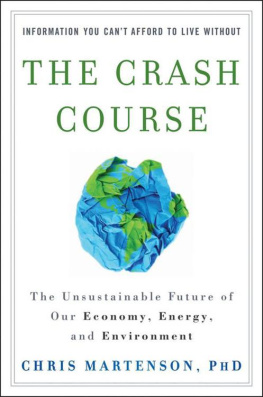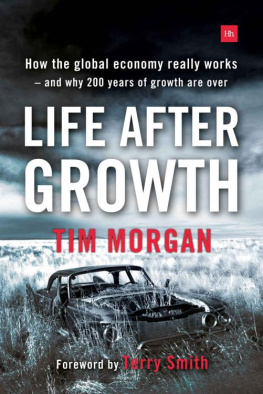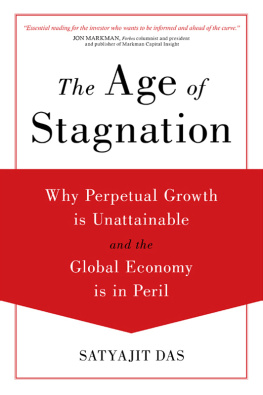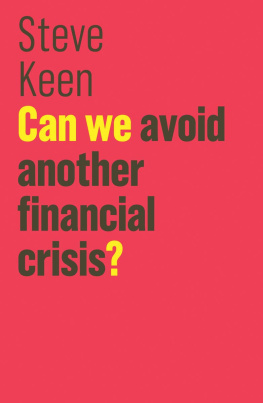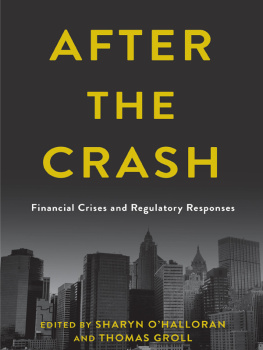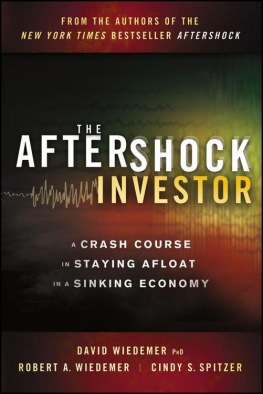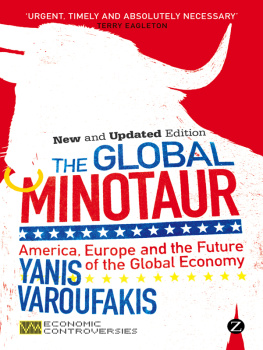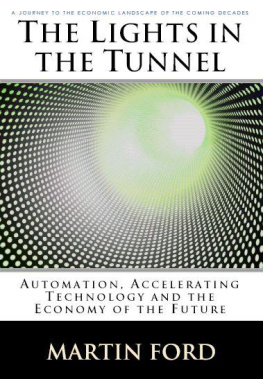Contents

Copyright 2011 by Chris Martenson. All rights reserved.
Published by John Wiley & Sons, Inc., Hoboken, New Jersey.
Published simultaneously in Canada.
No part of this publication may be reproduced, stored in a retrieval system, or transmitted in any form or by any means, electronic, mechanical, photocopying, recording, scanning, or otherwise, except as permitted under Section 107 or 108 of the 1976 United States Copyright Act, without either the prior written permission of the Publisher, or authorization through payment of the appropriate per-copy fee to the Copyright Clearance Center, Inc., 222 Rosewood Drive, Danvers, MA 01923, (978) 750-8400, fax (978) 646-8600, or on the web at www.copyright.com . Requests to the Publisher for permission should be addressed to the Permissions Department, John Wiley & Sons, Inc., 111 River Street, Hoboken, NJ 07030, (201) 748-6011, fax (201) 748-6008, or online at www.wiley.com/go/permissions .
Limit of Liability/Disclaimer of Warranty: While the publisher and author have used their best efforts in preparing this book, they make no representations or warranties with respect to the accuracy or completeness of the contents of this book and specifically disclaim any implied warranties of merchantability or fitness for a particular purpose. No warranty may be created or extended by sales representatives or written sales materials. The advice and strategies contained herein may not be suitable for your situation. You should consult with a professional where appropriate. Neither the publisher nor author shall be liable for any loss of profit or any other commercial damages, including but not limited to special, incidental, consequential, or other damages.
For general information on our other products and services or for technical support, please contact our Customer Care Department within the United States at (800) 762-2974, outside the United States at (317) 572-3993 or fax (317) 572-4002.
Wiley also publishes its books in a variety of electronic formats. Some content that appears in print may not be available in electronic books. For more information about Wiley products, visit our web site at www.wiley.com .
Library of Congress Cataloging-in-Publication Data:
Martenson, Chris, 1962-
The crash course: the unsustainable future of our economy, energy, and environment/Chris Martenson.
p. cm.
Includes Index.
ISBN 978-0-470-92764-9 (cloth)
ISBN 978-1-118-01310-6 (ebk)
ISBN 978-1-118-01311-3 (ebk)
ISBN 978-1-118-01312-0 (ebk)
1. Sustainable developmentUnited States. 2. Economic forecastingUnited States. 3. United StatesEconomic conditions2009- I. Title.
HC110.E5M375 2011
338.97307dc22
2010039914
Foreword
If you glance up from this book and scan your surroundings, youd be challenged to spy a single object that did not somehow, in some way, get there because of oil, Chris opens Chapter 16 ( Peak Oil ) of this book you are now reading.
Sure enough, I was reading this chapter on a train bound for Washington, DC, and wed just pulled up to the BWI airport rail station. Diesel... jet fuel... and all the large McMansions packed full of plastic, petroleum-based products... that wed just shot past at 64 miles per hour. Thinking about our economy in this simple way, for just one second, leads to one conclusion: Right now we live like kings of old, but on borrowed money and borrowed time.
According to Chris, a gallon of gasoline performs the equivalent energy of 350 and 500 hours worth of work. If thats the case, a gallon of gas isnt expensive at $3.09which is what I paid to fill up the family car today. If I were paying that gas a $15 wage (like I do the babysitter), Id pay anywhere from $5,250 on up to $7,500. Really, were reaping what may be a once-in-a-species energy orgy that could end in 20 years or less.
Thats the genius behind Chris Martensons The Crash Course direct and straightforward talk about what the next 20 years could look like. But the reason you should pay attention to what Chris has to say is not simply what he writes. Its what hes done.
I thought it was a big deal when, with my wife and our first child, I moved to Paris to work with Bill Bonner, which led to my role in what grew into Agora Financial. Chris has gone one step further.
He realized in 2002 that something wasnt right in the economy of the United States. The research he beganmuch of which is in this very bookoverwhelmed him so much that he vacated his VP seat at a Fortune 300 company just to get to the bottom of it all.
Once he had, he moved to act.
Brave and ready to side with his gut, he picked up his entire family with his wife Becca and left behind their cozy six-bedroom, five-bath house in Mystic, Connecticut. They moved into a rented house in a western Massachusetts town where farmland thrived and there were about 8,400 people.
I have some experience with that side of New England myself. I know how hard that is at first. The 1973 oil shock forced my father to shut down his building supply company. And we tried out sustainable livinghe was an early believer.
We moved into a farmhouse without any running water. We had to use an outhousetry doing that in the middle of February! And we put living off the land into practice. We grew all our own food, raised chickens, and rented land to a local dairy farmer. Chris talks about all these kinds of moves in Chapter 27 ( What Should I Do? ).
In investing, solid stocks are often the ones where the heads of companies and high levels of staff have a lot of skin in the game. Not options, mind you, but actual stock. Again, Chris goes one step furtherhe classifies stock wealth as tertiary wealth and suggests hard assets: gold, silver, farmland.
Chris helps us realize that in just the short span of 150 years, weve spent our way through our greatest wealthwhat he calls primary wealth and secondary wealth . These kinds of wealth are the ores that come out of the ground, phosphates that keep our soil fertile (in the hope of feeding 9.5 billion mouths by 2050), and the fish in our oceans.
If you stop to count, as Chris does here, its not only Peak Oil we should be worrying about, but Peak Everythingfrom phytoplankton to nutrient-rich black soil.
This book doesnt make you feel guilty about the energy-dependent lives we lead right now. Its about thinking how you might shift even one small thingChris calls this Step Zeroand going ahead with that one change until you can make another.
Some very small things, like turning off the faucet when you brush your teeth, might not amount to much. After all, only 10 percent of the worlds water usage comes from what we use in our homes. And thats another thing about Chris. He doesnt shy away from the hard facts of just what were up against.
Right now, wed need 1.4 Earths to sustain our way of life at current levels. Of the 54 oil-producing nations out there, 40 are past peak production. That means 14 nations must shoulder our decline burden and the bigger burden: growth. When it comes to debt, my pet subject, Chris does it justice in Chapter 10 ( Debt ).
Total credit debt has doubled five times in the past four decades! Thats enabled a generation of bubbles, each more perilous than the last.
Working with documentary filmmakers is old hat to me now, after wrapping up the critically acclaimed documentary I.O.U.S.A . Chris is no stranger on this front, either. He produced a three-and-a-half-hour video presentation in five months called the Crash Course . In 2008, he did something truly startling: He gave out a downloadable version of the Crash Course his lifes work so farfor free. When you do that and then 25,000 pay for the professional DVD anyway, you know youre onto something.

